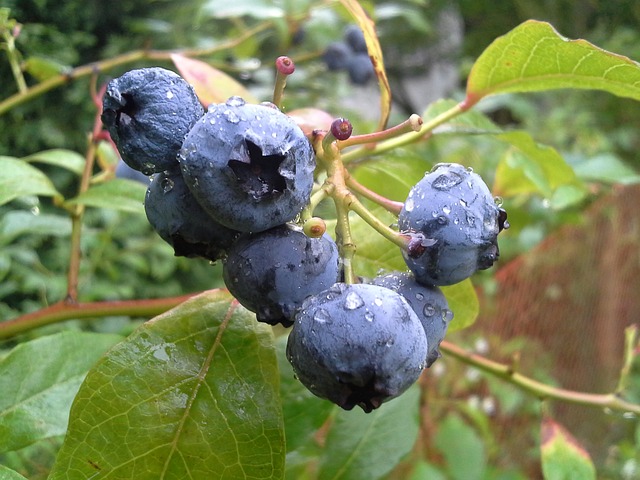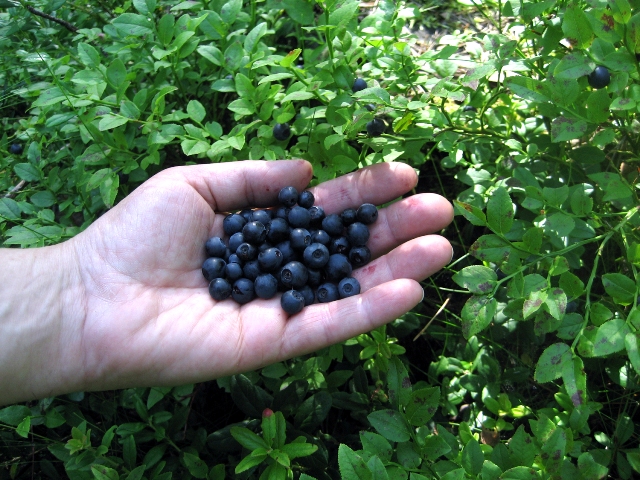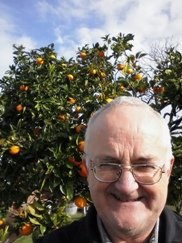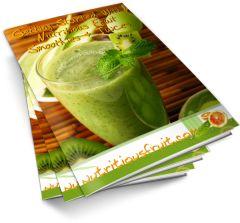Bilberry: Origins - Consumption - Nutrition Facts - Health Benefits
|
|
|
Contents
- Geographic origin and regions grown
- History of consumption
- Common consumption today
- Nutrition Facts: Vitamins, minerals and phytochemical components
- Health Benefits: Medicinal uses based on scientific studies
- Bibliography
Geographic Origins and Regions Grown

Bilberry is the common name for several different small shrubs in the family of plants called Vaccinium (family Ericaceae) that bears sweet and delicious fruits. This berry plant which is most often called Vaccinium myrtillus is also known as the bog bilberry, whortleberry, myrtle blueberry, blaeberry, whinberry (or winberry), and fraughan.
Bilberries generally grow in wet, acidic soils throughout the temperate and subarctic regions of the world. They are closely related to the wild, but cultivated North American blueberry and huckleberry; these fruits also belong to the genus Vaccinium. A simple way to distinguish the two fruits is by knowing that the bilberry produces single berries or berries in pairs, while the blueberry produces clusters of berries. Furthermore, the blueberry has a flesh that is light green in color whereas the bilberry is red or purple.
The bilberry is rarely cultivated, but the fruits are sometimes collected from wild plants. Scandinavia, Scotland, and Poland are each noted for having large areas of wildly growing bilberries in the country side.
It is widely believed that when the first crop of bilberry is good, the rest of the fruit harvesting season will be excellent.
History of Consumption
The bilberry has been used for centuries both medicinally and as a food in jams, jellies, and pies. It is collected and gathered from the wild plant during the season. For the past 300 years, the bilberry was consumed just like another other fruit, but the majority of bilberries were collected and used as flavoring agents. Bilberry juice is frequently added to soda, beverages, pies, cakes, liquors, jams, and sorbets.
Common Consumption Today
The fruits can be eaten fresh, but as previously stated, are typically made into jams, juices, pies, and other decadent desserts. In France they are used as a base for liquors and are a popular flavoring for sorbets. In many parts of Europe, the bilberry extract is used as a flavoring for crêpes and baking pies. For decades, the bilberry fruit, leaves, and roots have been a beneficial dietary supplement for diabetics (1). Bilberries are also typically consumed by individuals that have problems with night vision, cataracts, or glaucoma (6), (7), (9).
Nutrition Facts: Vitamins, Minerals and Phytochemical Components

Bilberry fruits contain chemicals known as anthocyanosides, which are plant pigments that have excellent antioxidant properties (2). They scavenge foreign particles that can cause damage in the body known as free radicals and this in turn prevents or reverses damage to cells (3).
Anthocyanins in particular, have vasoprotective properties that aid the prevention and treatment of vascular diseases (2). Antioxidants have been shown to help prevent a number of long-term illnesses such as heart disease, cancer, and an eye disorder called macular degeneration (4), (6).
Bilberry fruits contain vitamin C, a well know antioxidant and have large amounts of tannins. Tannins are substances that acts as an astringent. Tannins also have anti-inflammatory properties that may help the body overcome diarrhea, treat ulcers, and control blood sugar levels in diabetics (1), (8).
Health Benefits: Medicinal Uses Based on Scientific Studies
To date, more studies involving the bilberry plant have been performed rather than the bilberry fruit. There are very few clinical studies on the bilberry plant and most of the reports are anecdotal. On the other hand, animal studies have shown that bilberry leaves help control dyslipidaemia (abnormal levels of lipids in the blood) (5).
According to earlier and more recent studies the bilberry plant, particularly its leaves, have antidiabetic, anticarcinogenic, antiulcer, and vasoprotective properties in addition to compounds that treat vision problems (1), (2), (4), (6), (7), (8). Extracts from the bilberry are specifically used to treat chronic venous insufficiency and atherosclerosis, improve heart function, control blood sugar levels, relieve diarrhea, heal open ulcers and improve vision.
For years, people that practiced folk medicine used extracts from bilberry leaves to treat gastrointestinal ailments, skin infections, and for infusions. Unfortunately, despite the hype about the bilberry and its healing properties, there is no clinical evidence that prove whether or not the consumption of the bilberry fruit or plant can heal, cure, or treat any of the previously mentioned conditions. All reports are anecdotal and its use in alternative medicine lacks validity.
Bibliography
1. Bailey C, Day C. (1989) Traditional plants medicine as treatments for diabetes. Diabetes Care, 12:553-564.
2. Bell DR, Gochenaur K. Direct vasoactive and vasoprotective properties of anthocyanin-rich extracts. J Appl Physiol . 2006 Apr; 100(4):1164-70.
3. Blumenthal M, Busse WR, Goldberg A, et al. The Complete German Commission E Monographs. Boston, Mass: Integrative Medicine Communications; 1998.
4. Bomser J, Madhavi DL, Singletary K, et al. In vitro anti-cancer activity of fruit extracts from Vaccinium species. Planta Med. 1996; 62:212–216.
5. Cignarella A, Nastasi M, Cavalli E, et al. Novel lipid-lowering properties of Vaccinium myrtillus L . leaves, a traditional antidiabetic treatment, in several models of rat dyslipidaemia: a comparison with ciprofibrate. Thromb Res . 1996;84(5):311-322.
6. Head KA. Natural therapies for ocular disorders, part two: cataracts and glaucoma. Altern Med Rev. 2001; 6(2):141-166.
7. Kramer JH. Anthocyanosides of Vaccinium myrtillus (bilberry) for night vision—a systematic review of placebo-controlled trials. Surv Ophthalmol. 2004 Nov-Dec; 49(6):618.
8. Magistretti NJ, Conti M, Cristini A. Antiulcer activity of an anthocyanidin from Vaccinium myrtillus. Arzneim-Forsch . 1988;38:686–690.
9. Muth ER, Laurent JM, Jasper P. The effect of bilberry nutritional supplementation on night visual acuity and contrast sensitivity. Altern Med Rev. 2000; 5(2):164-173.
Disclaimer
Nutritiousfruit.com provides this website as a service. Although the information contained within the website is periodically updated, no guarantee is given that the information provided is correct, complete, and/or up-to-date. The materials contained on this website are provided for general information purposes only and do not constitute legal or other professional advice on any subject matter. Nutrtiousfruit.com does not accept any responsibility for any loss, which may arise from reliance on information contained on this website. The information and references in this website are intended solely for the general information for the reader. The content of this website are not intended to offer personal medical advice, diagnose health problems or to be used for treatment purposes. It is not a substitute for medical care provided by a licensed and qualified health professional. Please consult your health care provider for any advice on medications.
Didn't find what you were looking for? Search here...

Amazon Search Box:
Did you like this page?
|
|
|




